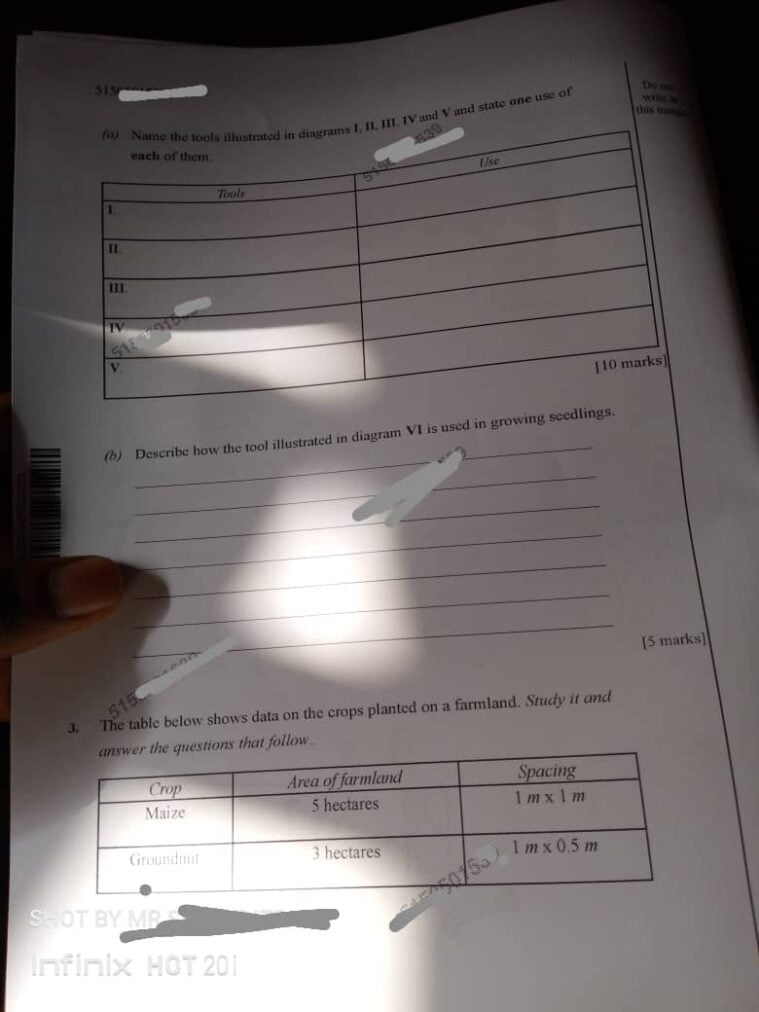WAEC GCE Agric Practical Questions and Answers for free to all Weac GCE candidates In Ghana, Liberia, Nigeria, Sierra Leone, and The Gambia. On this page, all the Waec Agric questions and answers for 2023 are released here.
Waec GCE Candidates who applied for the West African Examination Council (WAEC) SSCE Examination will write their Waec GCE Agric Practical For general students.
All details you need for you to be successful and pass this 2023 Waec GCE Exam will also be given and make sure you read all through. The Time Of the WAEC GCE Agric Practical Exam is 3:30Pm – 5:00Pm
You are writing the 1 papers in only one day. In this post, the previous Year’s Waec GCE questions and answers for Agricultural Science Practical are released and the 2023 Waec Agric Exam Questions will also be released for those participating in the 2023 Waec GCE examination.
2023 Waec GCE Agricultural Practical Questions and Answers
The 2023 Waec Agric questions and answers loading! 2023 GCE Agricultural Science Practical Answers Loading!! 2023 GCE Agricultural Science Answers Loading!!!
Kindly bookmark the website for the answers that will be released here. Or better still reload the site to check if the answers for the 2023 Waec GCE Agricultural Science questions and answers have dropped.




(1a)
A – Clay soil
B- Sandy soil
(1b)
Sandy
(1ci)
Cylinder A:
Percentage of water retained = (Water collected / Water added) x 100
= (10 cm³ / 30 cm³) x 100
= 33.33%
(1cii)
Cylinder B:
Percentage of water retained = (Water collected / Water added) x 100
= (25 cm³ / 30 cm³) x 100
= 83.33%
(1d)
(PICK ANY TWO FROM EACH)
A – wheat, barley, oats
B – Carrots, radishes, sweet potatoes
NO.4
I. The ovary produces eggs and hormones like estrogen and progesterone.
II. Ureters transport urine from the kidneys to the bladder.
III. The uterus provides a nurturing environment for fetal development during pregnancy.
IV. The cervix connects the uterus to the vagina and allows the passage of menstrual blood and sperm.
V. The vulva serves as the external genitalia, including the labia and clitoris.
(3a)
The plant population of groundnut can be determined by using the formula:
Plant Population = Area of Farmland / Spacing
In the table, the area of farmland for groundnut is given as 3 hectares, and the spacing is given as 1m * 0.5m.
First, let’s convert the area from hectares to square meters (1 hectare = 10,000 square meters):
Area of Farmland (in square meters) = 3 hectares × 10,000 square meters/hectare
=30,000 square meters
Now, we can use the formula:
Plant Population = 30,000 square meters / (1m × 0.5m)
Plant Population = 30,000 square meters / 0.5 square meters
Plant Population = 60,000
So, the plant population of groundnut is 60,000.
(3b)
To calculate the expected plant population for maize, we will use the formula:
Plant Population= (Area of Farmland)/(Spacing) × Germination Percentage
Given that the area of farmland for maize is 5 hectares (50000 square meters) and the spacing is 1m×1m, the formula becomes:
Plant Population= (50000/1×1) ×0.9
= 45000
(3c)
(i) Temperature
(ii) Sunlight
(iii) Rainfall
(3d)
(i) Crop rotation
(ii) Weed control
More Loading


7 Comments
pls I need Agric practical solutions .Is tomorrow and I need it now u know is my first time
Same here!!!
U pple should Goan read… why did u parents take u to school in The first place
Are you for real can we chat on Whatsapp all I need is just math and I need it at least by midnight before the exam day
Pls how About agric practical…. it’s starting in few minutes
Please I will love to chat you directly, I need help in other subjects
Thanks very much it actually helped.